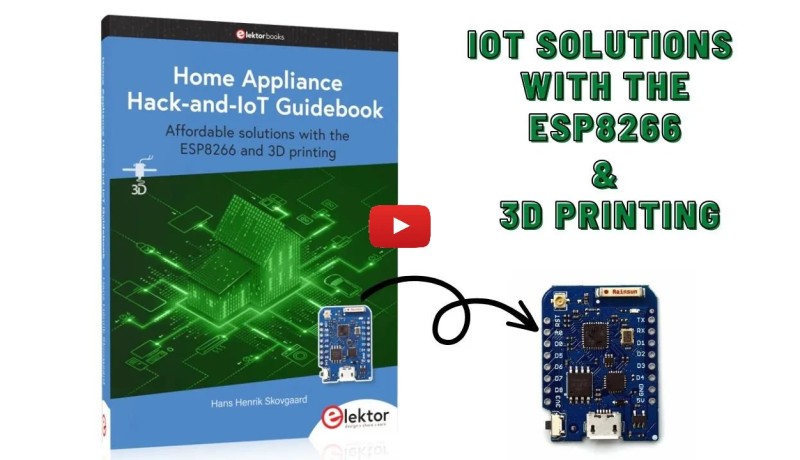Home Appliance Hack-and-IoT Guidebook
February 05, 2023
on
on

The Home Appliance Hack-and-IoT Guidebook explains how home appliances work and how you can modify and reprogram them for your own needs. The author also presents details on constructing your own home appliances including a colorful smart home accessory, a refrigerator/greenhouse controller, an AC powerline monitor, a door lock monitor, and an IKEA Trådfri controller.
Some of the constructions benefit from a Raspberry Pi configured as a gateway or file server. This is also described in detail with all the necessary configuring.
All the software written for the IoT devices, the printed circuit board (PCB) layouts, and the 3D printer design files described in the book are available for downloading for free.
Some of the constructions benefit from a Raspberry Pi configured as a gateway or file server. This is also described in detail with all the necessary configuring.
Designs for PCBs and Enclosures
For most of the designs in the book, a small printed circuit board (PCB) and an enclosure are presented so readers can have a finished and attractive-looking product. Readers having – or with access to! – a 3D printer can “print” the suggested enclosures at home or in a shop.All the software written for the IoT devices, the printed circuit board (PCB) layouts, and the 3D printer design files described in the book are available for downloading for free.
Resources
- Get the book printed on good old paper and get a WeMos D1 Mini Pro board (see below) for free!
- Get the e-book as PDF (and print it yourself on good old paper ;-)
Home Appliance IoT Development Board for Free
The paper version of the book comes with a free IoT development board. If you are looking for a small yet powerful IoT device, you are likely to come across the ESP8266 and compatible products on the market today. One of these, the Wemos/Lolin D1 Mini Pro board strikes a remarkable balance between cost and performance. A small and very affordable prototype board, the D1 Mini Pro stands out with its Wi-Fi functionality and a 16-Mbytes flash memory for easy creation of a flash file system. In addition, there are sufficient input and output pins (only one analog input though) to support PWM, I²C, and One-Wire systems to mention but a few. As a benefit, all firmware developed for these DIY, “IoT-ized” devices can be updated over-the-air (OTA).
Read full article
Hide full article



Discussion (0 comments)